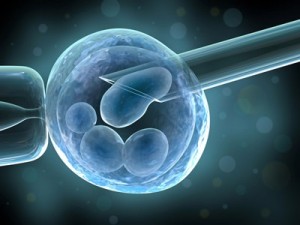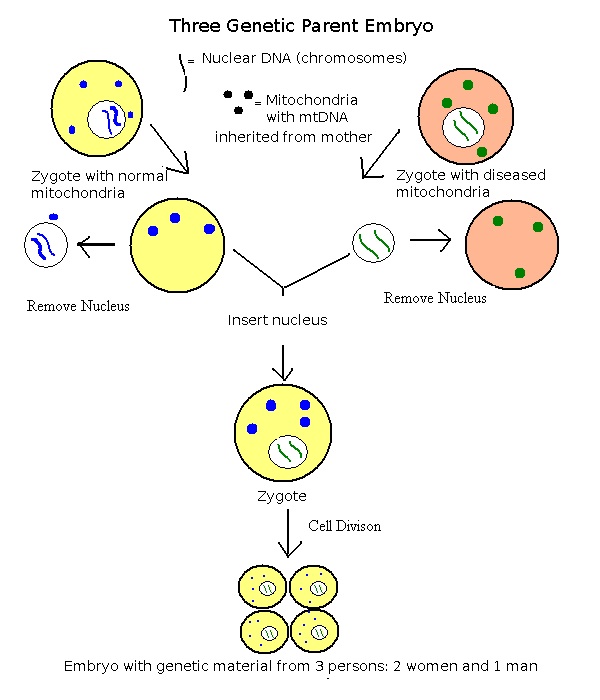Scientists Want to Engineer “Three-Parent” Human Beings
 The 3-genetic parent embryo is back in the news. This time it is Australia that wants to attempt to genetically engineer a human embryo to have 3 genetic parents.
The 3-genetic parent embryo is back in the news. This time it is Australia that wants to attempt to genetically engineer a human embryo to have 3 genetic parents.
Why would scientists want to engineer an embryo with the genetic material from 3 people? Because, they think it will “prevent” the inheritance of mitochondrial disease. Not all of our DNA that we inherit is in the nuclei of the egg and sperm that join at fertilization. In the cytoplasm of our mother’s egg are mitochondria. Mitochondria have their own DNA called mtDNA. We inherit our mtDNA only from our mother because sperm’s mitochondria are dumped at conception. There are genetic mutations that cause disease in mtDNA and a woman with a such a mutation cannot help but pass this mutation on to her children.
This is where the three parent embryos come in. Here is how it works. Scientists took the nucleus out of an embryo had a mutation in its mtDNA and put it into an embryo whose mtDNA was normal, after removing the nucleus of that embryo of course. The result is one embryo with the nuclear DNA from its mother and father and the mtDNA from another embryo and its mother. Confused? Here is a simplified diagram that I made from the one in the Nature paper. (A zygote is the single celled embryo that results from fertilization.)
So scientists created 2 embryos with IVF, destroyed one human embryo by removing its nuclear DNA and added the DNA from the other human embryo to make a third recombinant embryo with the mtDNA from one woman and the nuclear DNA from another woman and a man.
In Australia it is now illegal to transfer embryos created by techniques other than the fertilization of a human egg with human sperm into a womb. That law is there to prevent scientists from cloning embryos or genetically engineering embryos with extra human or animal DNA and then gestating them to see what happens. And just as in the UK, which has a similar law, Australian scientists are calling for an exception to this law to allow this 3 parent technique to move forward.
And while curing genetic disease with gene therapy is a laudable goal, the Catholic Church teaching is clear that this is not the way to do it. We cannot sacrifice two embryos to make a healthy third. We Catholics could embrace such a genetic therapy to cure mitochondrial disease if life did not need to be created, manipulated and destroyed in a dish. When the day comes that we can fix this without creating and destroying life in a lab, we Catholics can jump on that genetic engineering train.
With the announcement that with DNA sequencing, mitochondrial diseases can now be easily identified and diagnosed, it is imperative that we object to this approach to “curing” mitochondrial disease. We must insist that researchers look into alternative ways like somatic gene therapy to help those with mitochondrial disease now and not just focus on making sure no one with mitochondrial disease is born.


